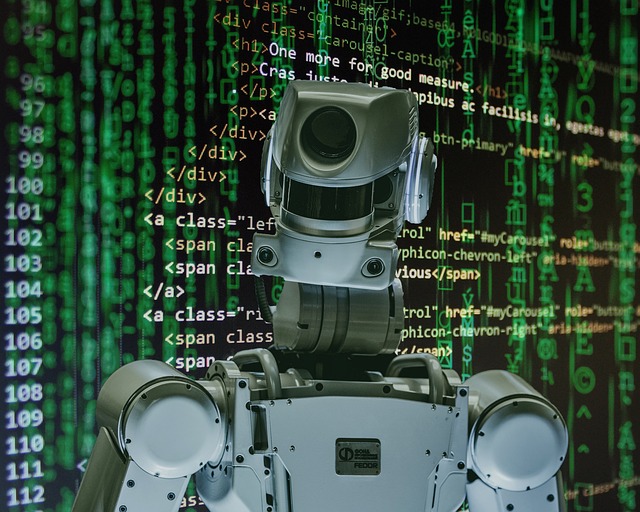
Machine learning is a transformative field within the realm of artificial intelligence that allows computers to learn and improve from experience without explicit programming. It is a formidable discipline that empowers machines to make accurate predictions, classify data, and recognize patterns, ultimately leading to enhanced decision-making and problem-solving capabilities.
At its core, machine learning leverages the power of algorithms to enable computers to analyze vast amounts of data, identifying intricate relationships and extracting insightful patterns that humans might overlook. By utilizing statistical techniques, machines can generalize from past examples and adapt their behavior to meet new challenges. This ability to adapt and learn autonomously sets machine learning apart from traditional computational methods.
The success of machine learning lies in its versatility, as it finds applications across various domains. From healthcare and finance to marketing and robotics, machine learning algorithms empower industries to uncover valuable insights and optimize processes. It enables medical professionals to diagnose diseases with remarkable accuracy, assists financial institutions in detecting fraud, and aids autonomous vehicles in understanding their surroundings.
Types of Machine Learning
To grasp the essence of machine learning, one must understand its key concepts. Machine learning can be broadly classified into three main types based on the learning process and the availability of labeled data. Each type has its unique characteristics and applications within the field, contributing to the diverse range of solutions machine learning offers.
Supervised Learning
Supervised learning is a popular approach in machine learning that involves training a model using labeled data. In this method, the algorithm learns from input examples and their corresponding correct outputs. By analyzing these labeled examples, the algorithm generalizes patterns and relationships, allowing it to make accurate predictions on unseen data.
Classification
Classification is a subcategory of supervised learning, where the task is to categorize data into predefined classes or categories. For example, a classification algorithm can be trained to differentiate between spam and non-spam emails, or to identify whether an image contains a dog or a cat. The algorithm learns from labeled examples and assigns new, unseen data to the correct class based on the patterns it has learned.
Regression
Regression is another type of supervised learning that focuses on predicting continuous values. It involves training an algorithm using labeled examples to establish a relationship between input features and a continuous target variable. For instance, regression can be used to predict housing prices based on factors such as location, size, and number of rooms.
Unsupervised Learning
Unsupervised learning operates on unlabeled data, seeking to identify hidden patterns or structures within the data. Unlike supervised learning, unsupervised learning algorithms do not have access to correct output labels. Instead, they analyze the data to find inherent associations or groupings.

Clustering
Clustering is a fundamental technique in unsupervised learning, aiming to group similar data points together. By identifying patterns and similarities, clustering algorithms partition data into distinct clusters based on shared characteristics. For example, clustering can help segment customers into different groups based on their purchasing behavior, allowing businesses to tailor marketing strategies for each segment.
Dimensionality Reduction
Dimensionality reduction is another form of unsupervised learning that focuses on simplifying complex data by reducing its dimensionality. By extracting essential features and eliminating redundant or irrelevant information, dimensionality reduction techniques can compress data while retaining meaningful insights. This is particularly useful in visualizing high-dimensional data or preparing it for further analysis.
Reinforcement Learning
Reinforcement learning involves training an algorithm to make sequential decisions by interacting with an environment. The algorithm is guided by feedback in the form of rewards or penalties, allowing it to optimize its actions based on the desired goal. Reinforcement learning has gained attention for its application in autonomous systems, robotics, and game playing.
The Machine Learning Process
The journey towards creating intelligent machines through machine learning is an intricate process that involves data, algorithms, and continuous learning. With an insatiable appetite for information, these machines embark on a quest to uncover patterns, make predictions, and ultimately enhance decision-making. Let us delve into the inner workings of the machine learning process, exploring its key steps and methodologies.
Data Collection
At the heart of the machine learning process lies data. A vast array of information is gathered and organized, forming the foundation upon which machines learn and evolve. This data can be diverse in nature, ranging from text and images to numerical values and time series. The quality of the data is crucial, as it directly affects the accuracy and reliability of the machine learning model.
Preprocessing and Feature Engineering
Before diving into the analysis, the collected data often requires preprocessing. This step involves cleaning the data, handling missing values, and addressing any outliers or inconsistencies. Additionally, feature engineering plays a pivotal role in shaping the data for effective learning. By selecting appropriate features and transforming them to enhance their relevance, machine learning models gain a deeper understanding of the underlying patterns.
Model Selection
Choosing the right model is an art in itself. This step involves considering various factors, such as the nature of the problem, the available data, and the desired outcomes. Depending on the task at hand, different algorithms can be employed, including regression models, decision trees, support vector machines, and neural networks. Each algorithm has its strengths and limitations, and finding the best fit is essential for optimum performance.
Model Training
Once a suitable model has been selected, it’s time to train it using the prepared data. This process entails feeding the algorithm with labeled data (in the case of supervised learning) or unlabeled data (in unsupervised learning).

The model gradually learns from the patterns and relationships within the data, iteratively adjusting its internal parameters to minimize errors or optimize performance. This training phase requires computational resources and time, as the machine learning model adapts to the unique characteristics of the dataset.
Now, with the increasing integration of edge computing solutions, even microcontrollers like the ESP32 chip can play a role in certain aspects of the machine learning process. While the model training phase is typically resource-intensive and demands more robust hardware, the ESP32 can contribute effectively during the deployment and execution of pre-trained models. For instance, the ESP32 can be employed to execute inference tasks at the edge, providing real-time analysis and decision-making in scenarios where low latency and decentralized processing are crucial. This makes the ESP32 a valuable asset in the broader landscape of machine learning applications, especially in resource-constrained environments where its capabilities align with the computational demands of specific tasks.
Validation and Evaluation
While training the model, it is essential to evaluate its performance to ensure its generalizability. Validation techniques such as cross-validation or hold-out validation split the data into training and validation sets, allowing us to assess how well the model performs on unseen data. Performance metrics like accuracy, precision, recall, and F1-score provide valuable insights into the model’s strengths and weaknesses, enabling adjustments and further refinement if necessary.
Model Deployment and Monitoring
After thorough evaluation and fine-tuning, the trained model is ready for deployment. It is incorporated into real-world applications or systems, where it can make predictions, classify data, or assist in decision-making. However, the journey does not end here. Continuous monitoring and maintenance of the deployed models are crucial to ensure their accuracy and adaptability as new patterns and trends emerge.
Applications of Machine Learning
Machine learning has revolutionized numerous industries and has become an indispensable tool in solving complex problems. From healthcare and finance to marketing and robotics, the applications of machine learning are vast and diverse.

It has also revolutionized numerous industries and has become an indispensable tool in solving complex problems. From healthcare and finance to marketing and robotics, the applications of machine learning are vast and diverse. Let’s explore some of the areas where machine learning is making a significant impact.
Healthcare: The technology is transforming healthcare by enabling accurate disease diagnosis, personalized treatment plans, and drug discovery. Machine learning algorithms can analyze patient data, including medical records, genetic information, and diagnostic images, to identify patterns and make predictions. This technology aids doctors in early detection of diseases, such as cancer, and helps develop targeted therapies for individual patients.
Finance: In the financial sector, algorithms have proven their worth in fraud detection, risk assessment, and algorithmic trading. By analyzing vast amounts of financial data, these algorithms can identify suspicious transactions and detect anomalies that may indicate fraudulent activities. Machine learning also plays a pivotal role in assessing credit risk and making investment recommendations, allowing financial institutions to make informed decisions.
Marketing: Machine learning enhances marketing strategies by analyzing customer behavior, predicting preferences, and optimizing advertising campaigns. By utilizing data from various sources, such as social media, browsing history, and purchase patterns, machine learning algorithms can segment customers, tailor marketing messages, and recommend personalized offers. This level of customization improves customer satisfaction and maximizes marketing ROI.
Robotics: Machine learning is at the forefront of advancements in robotics, enabling machines to interact with the environment autonomously. Through reinforcement learning, robots can learn from trial and error, improving their actions and decision-making over time. This ability is crucial in applications such as autonomous vehicles and robotic prosthetics, where machines need to navigate complex environments and perform precise tasks.
Natural Language Processing (NLP): Machine learning is instrumental in natural language processing, enabling computers to understand, interpret, and generate human language.

NLP algorithms power voice assistants like Siri and Alexa, language translation services, sentiment analysis tools, and chatbots. These applications improve human-computer interaction, making technology more accessible and efficient.
Image and Speech Recognition: Machine learning algorithms have revolutionized speech and image recognition, elevating their accuracy and usability. Computer vision systems powered by machine learning can analyze and interpret images, enabling applications such as facial recognition, object detection, and autonomous vehicles’ perception of the environment. Speech recognition algorithms empower voice assistants, transcription services, and voice-controlled applications.
The applications of machine learning are extensive and continually expanding into new domains. From revolutionizing healthcare and finance to optimizing marketing strategies and improving robotics, machine learning is shaping our world in unprecedented ways. As technology continues to advance, the possibilities for leveraging machine learning seem limitless, promising a future filled with intelligent machines that enhance our lives in remarkable ways.
